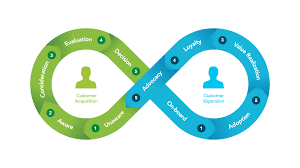Which Loop Is Better for Healthcare Marketing?
Use both: HubSpot’s Loop for rapid channel iteration; TPG’s Loop as the governed operating model—HIPAA-minded, SLA-driven, and measured on one executive scorecard.
Neither loop is universally “better.” In healthcare, results come from using both: HubSpot’s Loop for rapid testing and channel execution, and TPG’s Loop as the governed operating system. TPG adds a metric dictionary, HIPAA-minded consent/PHI minimization, SLA handoffs (marketing → patient access → clinic), and one executive scorecard that reports sourced revenue (attribution) and influence (associations) across EMR/CRM.
How the Loops Work Together


Why Healthcare Teams Choose This Pairing
What “Better” Looks Like in Healthcare
The TPG Loop starts by publishing a metric dictionary (stages, lookbacks, UTMs, referral types) and protecting original-source and date fields. Regions and service lines can localize content, but they report to the same definitions. SLA-based handoffs align marketing, patient access, and clinic teams; standardized rejection and no-show reasons power coaching and appropriate recycle paths.
HubSpot’s Loop excels at rapid iteration—Express, Tailor, Amplify, Evolve—across ads, landing pages, email/SMS, chat, and call centers. The TPG Loop then governs those motions: mandatory campaign associations, consent capture, PHI minimization in forms, and BAA validation. Attribution is board-safe: sourced uses a single executive model; influence is association-based with an overlap view to prevent double counting.
Finally, a revenue council reviews one scorecard—appointments scheduled/kept, accepted referrals, time-to-appointment, pipeline (sourced & influenced), treatment starts, expansion—and issues start/stop/scale decisions. iPaaS integrations keep CRM/EMR data synchronized with observability and audit trails, preserving compliance while enabling growth.
Healthcare Scenario → TPG Loop Role → HubSpot Loop Role → KPI → Guardrail
| Healthcare scenario | TPG Loop (governance) | HubSpot Loop (execution) | KPI to watch | Compliance / guardrail |
|---|---|---|---|---|
| Patient acquisition | Define stages, UTMs, attribution model; SLA for first touch & acceptance | Launch/test ads, LPs, chat, SMS nurtures | Appointments scheduled & kept | PHI minimization; consent & purpose stored |
| Referral capture | Referral taxonomy, recycle paths for no-shows | Referral forms, routing, reminders | Accepted referrals; time-to-appointment | Authorized data flow EMR↔CRM via iPaaS |
| Service line growth | Offer matrix, scorecard by service line | ABM plays, webinars, content syndication | Sourced & influenced pipeline | Overlap view avoids double counting |
| Provider marketing | Govern credentials, specialties, locations | Local pages, reviews, community events | Lead acceptance %, conversion | BAA posture for 3rd-party vendors |
| Retention & expansion | Scorecard ties CX plays to revenue | Education, reminders, advocacy programs | Renewal/return rate, NPS/CSAT | Preference center & retention policy |
Frequently Asked Questions
Make Healthcare Growth Compliant—and Measurable
We’ll deploy the TPG Loop with HIPAA-minded consent, SLAs, attribution & influence, and one executive scorecard—so budget follows evidence.
Talk to a Healthcare RevOps Architect